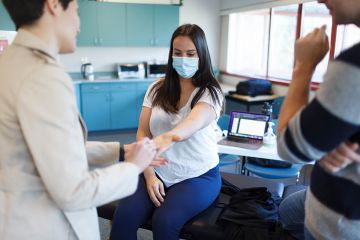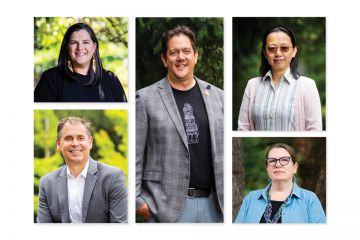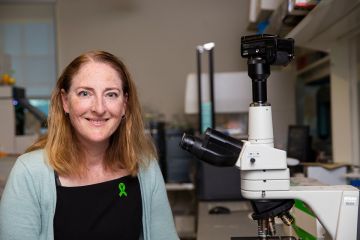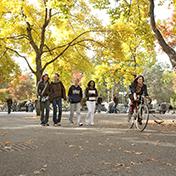Expert Q&A on physical distancing impact on queer and trans men
- Jennifer Kwan
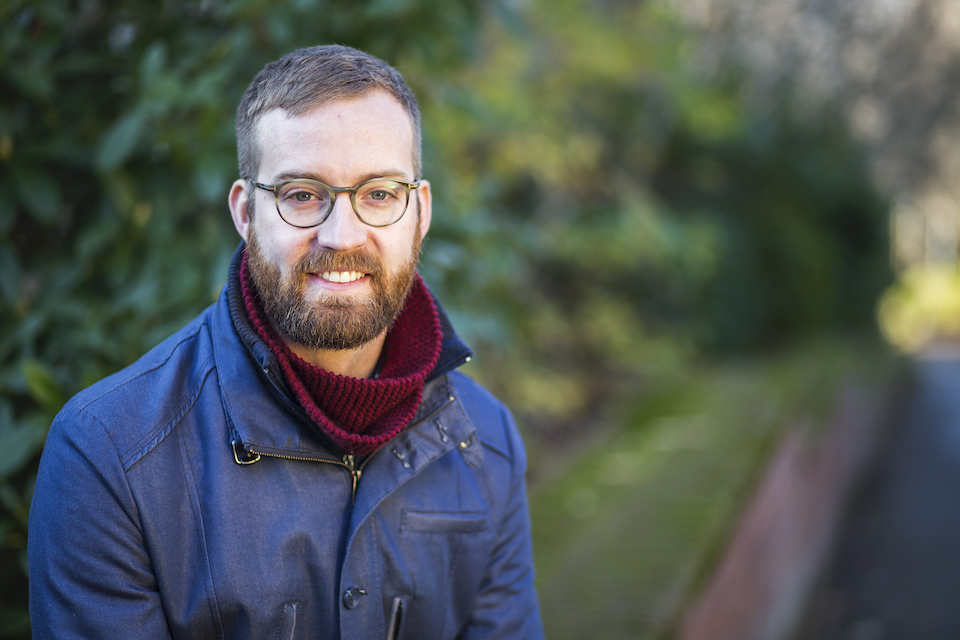
How communities emerge from the COVID-19 pandemic with health and well-being intact is a key question for a University of Victoria researcher, who is studying ways isolation has impacted gay, bisexual, queer, trans and Two‑Spirit (GBQT2+) men in Canada.
There are early signs of unintended consequences of physical distancing rules including decline in mental, social, sexual and physical health, says Nathan Lachowsky, a community-engaged researcher with UVic’s School of Public Health and Social Policy.
Lachowsky’s work, which is funded in part by the Michael Smith Foundation for Health Research, is finding ways to build stronger communities through awareness, service adaptation and policy support by levelling social inequities exacerbated by the pandemic. It builds upon a recent national community-based health survey with thousands of GBQT2+ men from all provinces and territories in Canada.
Q What are the health risks to GBQT2+ men during the pandemic?
A. Many GBQT2+ already experience elevated rates of mental health challenges such as anxiety, depression and loneliness due to being a marginalized population in society. Early observations tell us that there are risks around mental health, unmet sexual health needs and limited access to hormone treatments, as well as HIV and other treatments. Our research seeks to find strategies to help marginalized communities thrive during the pandemic despite adversity.
Q Are there topics the pandemic brings to light more overtly than before COVID?
A. We are particularly concerned about various social dimensions in communities where challenges with mental health and violence are already elevated. This is amplified by issues such as the pandemic’s economic impacts and elevated discrimination against GBQT2+ communities including topics such as the way we collectively talk about families and sexual health. Some individuals have been isolated in households with family or roommates who are not supportive of their sexual orientation or gender identity or expression. Being forced back into the closet because of unsafe housing is just one topic. Public health acknowledged a rise in domestic violence during the pandemic. Many GBQT2+ men and gender diverse people were not immune to this rise.
More broadly with physical distancing measures in place that have restricted communal, in-person supports, we worry about worsened mental health outcomes—potentially even suicide.
Q How has COVID shone light on how we can build stronger relationships more generally?
A. GBQT2+ men have long formed chosen families to provide holistic care and support. These are not biological families, and thus do not align with traditional notions of the nuclear family. Chosen families are also not recognized legally. Some polyamorous GBQT2+ are in consensually non-monogamous romantic relationships. GBQT2+ communities needed to work together to interpret public health recommendations about physical distancing and combining “bubbles” that do not mention their realities in order to ensure that themselves, their loved ones and society are kept safe from COVID-19.
Q There have been recent public calls to lift a ban that excludes blood donations from men who have sex with men. How relevant is this during COVID?
A.There are experimental treatments being examined to fight COVID-19 that use blood donated by individuals who have recovered from the coronavirus for plasma transfusions in dying patients. The strategy relies on donors having COVID-19-fighting antibodies that circulate in their blood. The immune system creates antibodies that are proteins that can bind to and neutralize the virus.
In Canada, there is a ban excluding men who have had sex with men from donating any blood, including plasma. Yet there are blood shortages at a time when we need those donations to fight the virus, as well as ongoing needs for surgeries and other treatments. It’s a policy problem that has only been further exacerbated during COVID.
Q How do you characterize this disconnect and what is the path forward?
A. It’s simple: the blood ban promotes homophobia, biphobia and transphobia in society. Not all sexually active GBQT2+ men are living with HIV nor are likely to acquire HIV, but all are banned from donating blood in Canada.We should be asking questions about specific practices that pass HIV and not about someone’s gender or the gender of their sexual partners. Other counties such as Italy, Spain and Portugal do not have a specific blood donor ban against men who have sex with men.
Our research provides data that we hope will help guide policymakers as they seek to reimagine an outdated donor eligibility policy in Canada that maintains both the safety and sufficiency of the blood supply.
Q Your research team is currently looking at impacts of physical distancing pre and post-COVID. How can the community get involved?
A. Working with the Community Based Research Centre, a national organization based in Vancouver we will launch a new COVID-19 survey this summer to examine the impacts on GBTQ2+ across Canada and their strategies for surviving and thriving through the pandemic. In addition, we are conducting phone interviews to understand how people who have received blood products (e.g. those with recent surgeries, some cancer treatments, blood disorders) feel about the blood donor ban against men who have sex with men. No changes should be made without consulting this important stakeholder group.
Photos
In this story
Keywords: health, research, COVID, School of Public Health and Social Policy
People: Nathan Lachowsky


